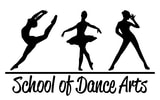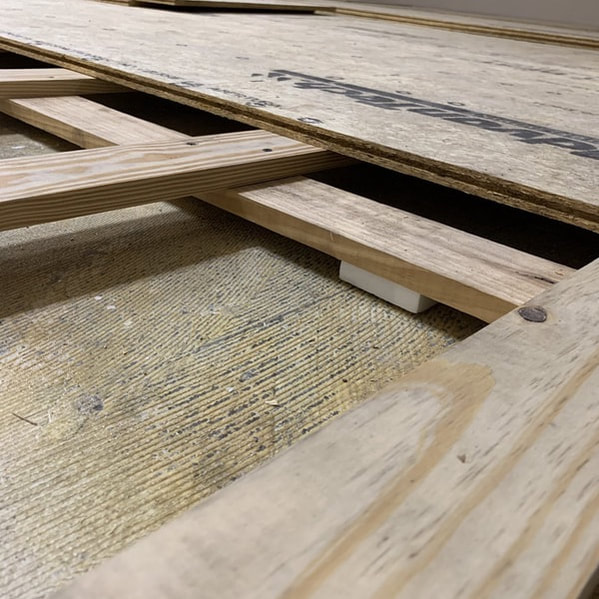Inside the Studio
Wood-Sprung Dance Floor
Dancing on a specific wood sprung floor is essential to protect the growing bodies of dancers from lifelong injuries. While no movement activity is without risk, the type of surface you are moving on can help reduce risk. Dance creates impact energy. If the energy generated by dance is returned to the body, it can result in shin splints, fractures, and an array of knee problems, tendonitis, and ankle sprains. A dance floor that is both impact absorbent and provides lateral foot support is essential.
Therefore, our dance floor has been built special for our dancers. The subfloor is concrete that is sealed with a moisture barrier. From there foam blocks were laid and a “basket weave” type framework built on top of the blocks providing cushion and spring for the floor. Each one of the boards was screwed down and once in place, the plywood went on top. The plywood was also screwed down but because the dance flooring is thin, each one of the screws and seams had to be sealed and then sanded to make the floor smooth and even. The floor is thoroughly cleaned after that and we roll out the dance floor. The dance flooring is specifically designed for ballet, tap, jazz, modern and in this case, tap. It provides the perfect traction for dance activities - not too sticky or too slippery.
ONLY CLEAN DANCE SHOES will be permitted to enter the studio space.
Therefore, our dance floor has been built special for our dancers. The subfloor is concrete that is sealed with a moisture barrier. From there foam blocks were laid and a “basket weave” type framework built on top of the blocks providing cushion and spring for the floor. Each one of the boards was screwed down and once in place, the plywood went on top. The plywood was also screwed down but because the dance flooring is thin, each one of the screws and seams had to be sealed and then sanded to make the floor smooth and even. The floor is thoroughly cleaned after that and we roll out the dance floor. The dance flooring is specifically designed for ballet, tap, jazz, modern and in this case, tap. It provides the perfect traction for dance activities - not too sticky or too slippery.
ONLY CLEAN DANCE SHOES will be permitted to enter the studio space.
History of school of dance arts
|
School of Dance Arts was founded as Step 'N Time, Inc. in 1991 by Heather Hagar in downtown Inverness.
Heather grew Step 'N Time to School of Dance Arts (SDA) and moved to a larger location in 2004. The second location happened to be adjacent to the original. This new location provided students and faculty a proper dance facility with two studios and an excellent faculty of educators. In 2017 Heather retired from ownership and Rachel Winsler, a former student of SDA, took over as the owner and director of the school. In the summer of 2019 SDA moved to its current location in Lecanto and under went renovations to build a state of the art dance facility. The doors were ready to open April 1, 2020 but the state wide stay at home order from COVID-19 delayed the start of classes until July of 2020. We are enjoying the new studio with our dance family. |






